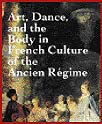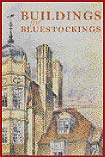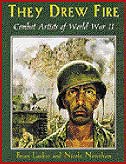

|
|
Fighting
for Social Justice:
The Life Story of David Burgess
By David S. Burgess '39
Wayne State University Press,
2000
This
memoir is the reflection of a life spent achieving social justice
for the poor. Here is a clear path to understanding the history
of social activism from the 1930s to the 1980s. The book will help
students, historians, and the general reader toward a sense of the
cohesiveness of American left-liberal reform in the mid-20th century.
Throughout the narrative, Burgess combines his belief in pacifism,
work with international aid agencies, and inner-city Christian ministry
to demonstrate the connections among international social movements
in America, Canada, and Asia. Bill Moyers, in the foreword, says,
"I have rarely met anyone who fulfilled more completely than David
Burgess my idea of the Christian pilgrim." The Burgess family lives
in Benecia, California.
|
|
 |
Art,
Dance, and the Body in French Culture of the Ancien Regime
By Sarah R. Cohen '79
Cambridge University Press, 2000
Generously
illustrated with eight full-sized color plates and 166 illustrations
that show the artful body, the court ballet, art as spectacle, and
remarkable masquerades, the book interprets the meanings of the
images that were produced during the reign of Louis IV and the Regency.
The author focuses on the relationship between art and the dance
during this period and analyzes the complex modes of bodily representation.
The paintings and drawings of Antoine Watteau are featured throughout.
Sarah Cohen is associate professor of art history at the University
of Albany, SUNY. She has contributed to Art History, The Art
Bulletin, and The Yale Journal of Criticism.
|
 |
Buildings for Bluestockings
By Margaret Birney Vickery '85
University of Delaware Press,
2000
Here
are 121 illustrations and 17 color plates that detail the architecture
of six of the earliest, purpose-built residential colleges for women,
founded in the latter half of 19th-century England. They reflect
the attitudes about women and higher education current at a time
when reproducing a home-like atmosphere for small groups, supervised
by a female proctor, was considered the right thing to do. Today's
college women would scoff at the protection and care that architects
deemed necessary to protect the gentle sex away from home. Nevertheless,
the halls are an impressive collection of stone masses and of intrinsic
interest as architectural marvels. Vickery earned a PhD at Stanford
in 1993 and has worked for the Victorian Society in London and lectured
on Victorian Architecture and the Arts and Crafts Movement. She
lives in Amherst, Massachusetts, with her husband and two children.
|
|
Life and Death in a Venetian Convent:
The Chronicle and Necrology of
Corpus Domini, 1395-1436
Works by Sister Bartolomea Riccoboni
Edited and Translated by
Daniel Bornstein '72
The University of Chicago Press,
2000
Riccoboni
built her Dominican convent, Corpus Domini, in 1394 in Venice, aided
by a wealthy patron and eminent Dominican preacher, Giovanni Dominici.
The Sister, 20 years later, wrote about the women who inhabited
the convent where they were physically bonded by the convent wall
and organized temporally by the rhythms of work and worship. Her
necrology records provide biographies of nearly 50 women who died
in the convent between 1395 and 1436. The personal and social meaning
of religious devotion comes alive in these texts. Bornstein is professor
of history and director of the Interdisciplinary Program in Religious
Studies at Texas A&M University and author of several books.
|
|
|
This is the first full-length treatment of women's literary partnerships, going to the heart of issues surrounding authorial identity. This study of co-authoring also delves into the alternative writing practices of female mediums, spiritualists, and automatic writers. Here is a fascinating perspective on issues ranging from the erotics of female collaboration to professionalism, copyright law, feminist politics, and the social construction of authorship. London is chair of the English department at the University of Rochester and author of The Appropriated Voice: Narrative Authority in Conrad, Forster, and Woolf. |
|
 |
They
Drew Fire: Combat Artists of World War II
By Brian Lanker and Nicole Newnham '91 TV Books, 2000 A year ago, a documentary film featuring seven U.S. combat artists of World War II was shown on public television. Much of this work, stored in military archives, had never been seen before. Pulitzer Prize-winning photographer Lanker (father of Julia Coburn '91) and documentary producer Newnham selected works sponsored by the U.S. Army, Navy, Marines, and civilian art programs sponsored by Life magazine and others for the program. The varieties of experience they chronicled provide a stunning record of life in the trenches, on the front lines, and behind the scenes. The book, based on the images shown in the TV program, showcases the work in color and black and white of seven of the more than 100 artists who recorded their individual wars with a pen or a paintbrush. A companion video of They Drew Fire is also available. Newnham lives in San Francisco. Her films include Unforgettable Face, a study of a Japanese-American soldier and the woman he freed from a concentration camp at the end of World War II. |
 |
African
American Quilting: The Warmth of Tradition
By Sule Greg C. Wilson '79 The Rosen Publishing Group, Inc., 2000 Written for the Library of African American Arts and Culture, this book introduces middle- and high-school students to the glories of African quilting. Taking the history of quilting back more than 2,000 years, the book is illustrated with full-page photos of brilliantly designed quilts in memorable fabric combinations. Readers discover the origins of kente cloth, appliqué, Bible quilts, and the messages and secrets of quilts. The author shares the importance of quilting as a story-telling technique and brings the craft up to the moment with comments by Rosa Parks, who says that any woman from Alabama her age knows how to quilt. Kwanzaa, Wilson's first book in the series, is about the African-American holiday introduced over 30 years ago. The book combines information from ancient texts and legends, folklore, and modern history and describes the Kwanzaa ceremony and its significance and symbols. Wilson is an educator, writer, and musician who has also written a book on drumming and made several recordings. He lives with his family in Tempe, Arizona. |
After Life | Drinkers, Drivers, and Bartenders | Increase | Out of the Ordinary | Finding it | Defining New Yorker Humor | Postcolonial Theory and the United States | Fighting for Social Justice | Art, Dance and the Body in French Culture of the Ancien Régime | Buildings for Bluestockings | Life and Death in a Venetian Convent | Writing Double | They Drew Fire | African American Quilting